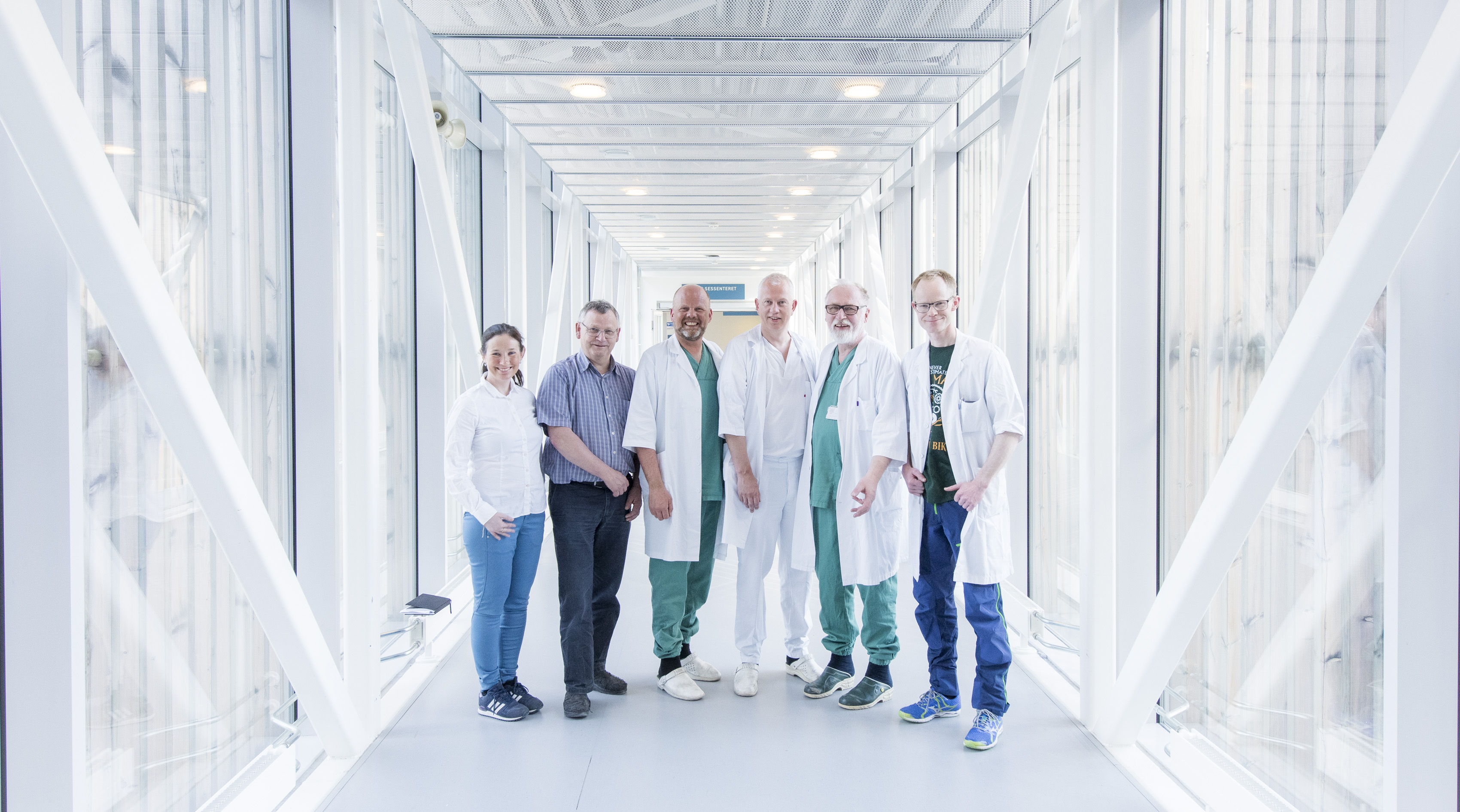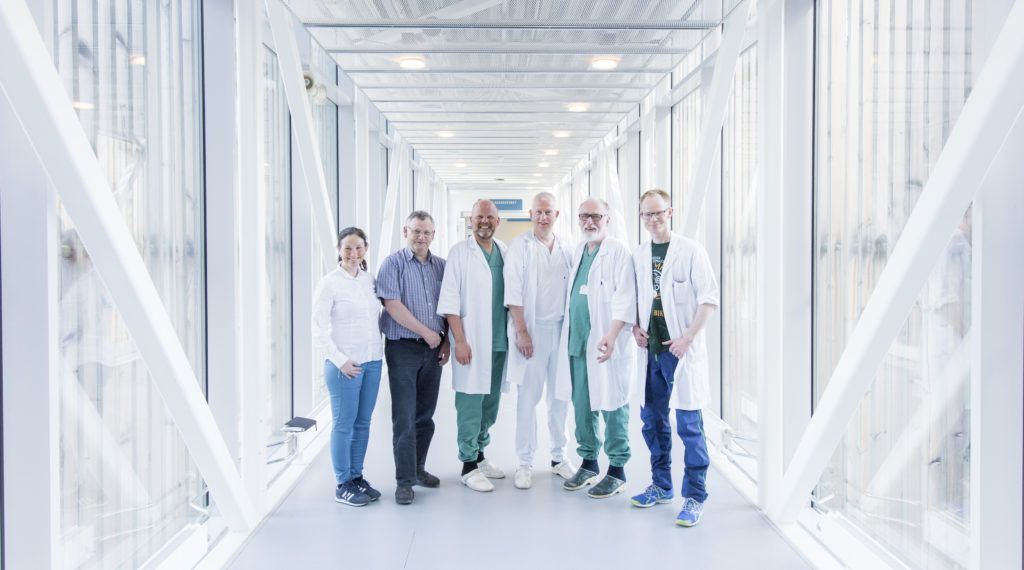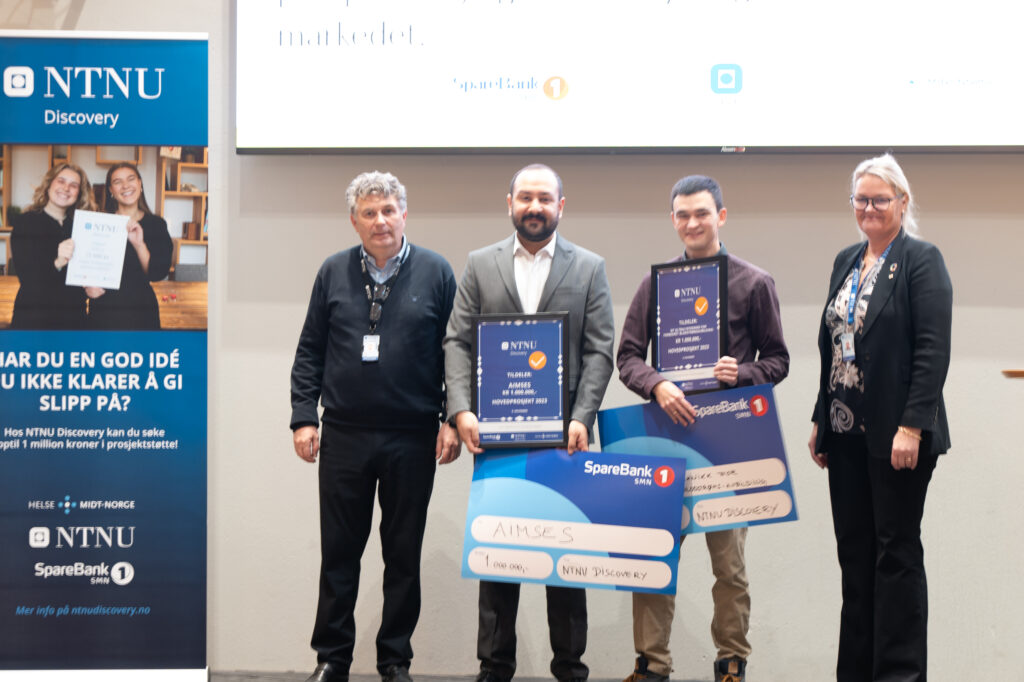Ultrasound diagnoses sepsis
Tekst: Anne-Lise Aakervik
Foto: synlig.no
A revolutionary diagnostic tool may allow doctors to discover symptoms of sepsis (blood poisoning) much sooner than what is possible today. If successful, it could save countless lives.

Six individuals are gathered in a meeting room at St. Olav’s Hospital’s intensive care unit. They are all eager to test the tool, called SepCease. Four of them are senior consultants, working with and doing research on sepsis (blood poisoning), and one is a researcher, part of Trondheim’s world-leading ultrasound community. The sixth is Siri Ann Mauseth, project manager at NTNU Technology Transfer. She is in charge of taking this innovation project to the next level. This unique interdisciplinary collaboration between NTNU’s renowned ultrasound community and infectious medicine and intensive care physicians at St. Olav’s Hospital will hopefully result in the development of the tool that can help many people, as the numbers are grim.
“Sepsis is among the leading causes of death worldwide, and in half of all deaths in Norwegian hospitals, sepsis has played a part,” says intensive care anaesthesiologist Erik Solligård. “One of the reasons for this is that it is almost impossible to diagnose the condition early. This means most patients enter the critical stage before we find out what’s wrong and can start treating them. This also means that these patients are hospitalized and in intensive care for prolonged periods of time, which means treatment is very expensive.
A welcome technology
When sepsis occurs, it alters the circulation in the small blood vessels (microcirculation). Early diagnosis and treatment with antibiotics is therefore essential to reduce the mortality rate. There is currently no good way to diagnose sepsis early, and clinicians have wanted this for a long time. The five people in the meeting room at St. Olav’s are hoping ultrasound technology is a viable solution.
“There is currently no technology on the market that is able to continuously monitor microcirculation in real-time, where the output is a simple numeric value,” says Senior Consultant Daniel Bergum, who plays a central role in the execution of the study.
“That’s why it is essential that we find new solutions to this serious problem,” says Jan Kristian Damås, who is a professor and an infectious medicine specialist. “The medical profession has wanted this for a long time, and with this project, we have the opportunity to develop something we really have faith in.”
“The research that’s been carried out in the last 20 years has not produced any new, revolutionary tools or knowledge on this topic. What we know is that an early diagnosis is critical, but with the tools we have on hand, that is proving very difficult,” says Idar Kirkeby-Garstad.
“We’re hoping this probe can be a gateway, allowing us to ‘see’ early alterations in microcirculation, so that we can find the right diagnosis. In addition, we believe that SepCease can help us measure how well the patient is responding to treatment. That factor, too, is highly uncertain in today’s situation. In time, we believe that a tailored, patient-oriented treatment of sepsis will be possible with this tool,” says Erik Solligård, intensive care anaesthesiologist and associate professor at NTNU.

Siri Ann Mauseth fra TTO, professor Hans Torp, anestesilege Erik Solligård, professor Jan Kristian Damås, førsteamanuensis Idar Kirkeby-Garstad and overlege Daniel Bergum
Testing on patients
With the help of a grant from NTNU Discovery, they are ready to start testing the probe on patients. “We are fortunate in that we can skip the animal testing phase, as our testing is so-called ‘non-invasive’, like most ultrasound methods,” says Daniel Bergum, who is an intensive care senior consultant and plays a central role in the clinical trials. “We will be measuring microcirculatory alterations. This is done by attaching the ultrasound probe to the hand or ear lobe. We will be measuring the circulation in healthy individuals, individuals whose circulatory system is somewhat affected, and critically ill patients with sepsis. Patients who have had heart surgery and who have been hooked up to a heart-lung machine have a slight loss of microcirculatory perfusion, like patients with sepsis. Testing the probe on this group of patients will give us useful insights. Then, we have to see how these readings can help us interpret what the circulatory alterations mean. The Discovery grant helps us hit the ground running.
A key piece of the puzzle
The Centre for Sepsis Research in Mid-Norway is also part of the project, spearheaded by Erik Solligård. “We have great faith in this project. In addition to contributing to the development and testing of SepCease, we do research on genetics and microcirculation, trying to identify what the patient’s risk factors are. Whenever a patient comes in with suspicion of sepsis, we have no idea which stage of the disease the patient is in. We may have five different patients with five different diagnoses/bacteria that caused their sepsis. They may have heart failure, respiratory failure, renal failure, etc., and all of these symptoms require individual attention. We’re also hoping that this tool over time can contribute to a more individual approach to treatment of patients with sepsis. Today, in addition to treatment with antibiotics, we administer the same supportive treatment to all patients.
Considerable market potential
The probe is based on a platform technology developed by Professor Hans Torp and his team. Doppler ultrasound offers many possibilities and this is just one method. The probe itself is so small that it can be attached to the ear lobe or finger. The microcirculation results are interpreted by the software, which presents a numerical value indicating the patient’s condition. Hans Torp is surprised by all the different things ultrasound technology can be used for.
“Many a time have I thought that we have reached the end of the line, that we can’t possibly develop this any further, but I am proven wrong time and time again,” he says, smiling. “The ideas often come from talking with clinicians, listening to their needs, challenges and thoughts on diagnostics and monitoring. This is a perfect example of interdisciplinary collaboration in practice.”
“The product has enormous market potential,” says Siri Ann Mauseth. “The probe is inexpensive to make, easy to use, and should always work. In the United States, Asia and Europe alone, around 15 million people a year are treated for sepsis. All of these would have benefited from SepCease.”
Facts: What is sepsis?
Sepsis, or blood poisoning, is a common cause of death worldwide, despite treatment with antibiotics. Sepsis is caused by a bacterial infection in the blood, which triggers a cascade of cytokines released by the immune system. This causes circulatory collapse, and blood vessels begin to “leak”. This, in turn, damages several vital organs. The main reason why sepsis has a mortality rate of approx. 30 percent is that the diagnosis is made too late. Sepsis is currently treated with antibiotics and intensive care (e.g. respirators and vasopressors to increase blood pressure.
Prosjekter og nyheter
Kontakt:
Prosjektleder
Jan Hassel
Epost: jan.hassel@ntnu.no
Telefon: 906 53 180
Kontor: Hovedbygget, sokkel
Håvard Wibe
Epost: havard.wibe@ntnu.no
Telefon: 41 47 37 68
Kontor: Hovedbygget, sokkel







